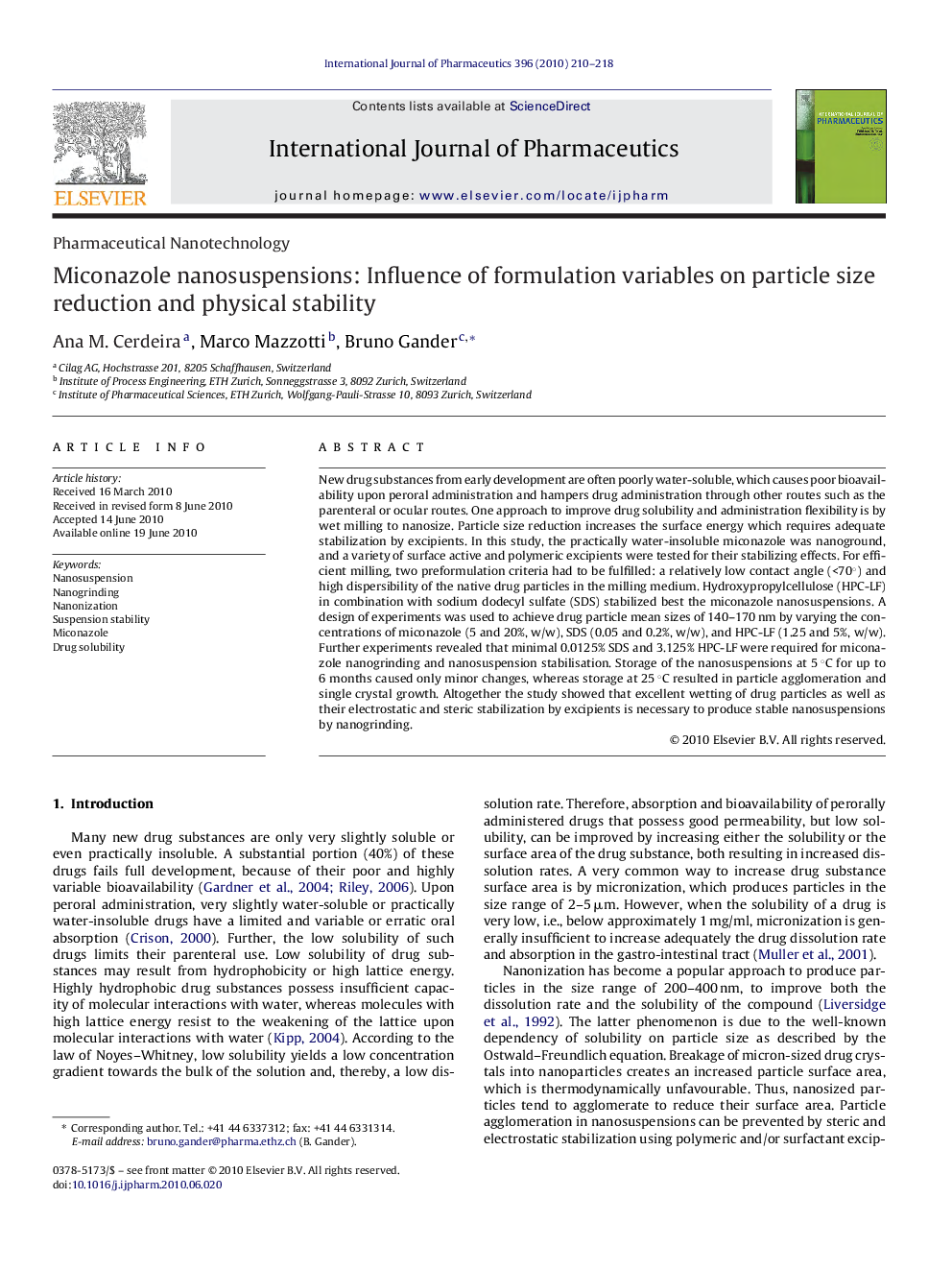| Article ID | Journal | Published Year | Pages | File Type |
|---|---|---|---|---|
| 2504033 | International Journal of Pharmaceutics | 2010 | 9 Pages |
New drug substances from early development are often poorly water-soluble, which causes poor bioavailability upon peroral administration and hampers drug administration through other routes such as the parenteral or ocular routes. One approach to improve drug solubility and administration flexibility is by wet milling to nanosize. Particle size reduction increases the surface energy which requires adequate stabilization by excipients. In this study, the practically water-insoluble miconazole was nanoground, and a variety of surface active and polymeric excipients were tested for their stabilizing effects. For efficient milling, two preformulation criteria had to be fulfilled: a relatively low contact angle (<70°) and high dispersibility of the native drug particles in the milling medium. Hydroxypropylcellulose (HPC-LF) in combination with sodium dodecyl sulfate (SDS) stabilized best the miconazole nanosuspensions. A design of experiments was used to achieve drug particle mean sizes of 140–170 nm by varying the concentrations of miconazole (5 and 20%, w/w), SDS (0.05 and 0.2%, w/w), and HPC-LF (1.25 and 5%, w/w). Further experiments revealed that minimal 0.0125% SDS and 3.125% HPC-LF were required for miconazole nanogrinding and nanosuspension stabilisation. Storage of the nanosuspensions at 5 °C for up to 6 months caused only minor changes, whereas storage at 25 °C resulted in particle agglomeration and single crystal growth. Altogether the study showed that excellent wetting of drug particles as well as their electrostatic and steric stabilization by excipients is necessary to produce stable nanosuspensions by nanogrinding.
